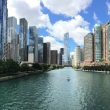Building safety report can help local administrators evaluate security, determine and mitigate risk
Driven by a slew of tragic shootings over the last few decades, the hardening of building safety features designed to protect inhabitants from active shooters have risen to the forefront of public discourse. As the latest contribution to this discussion, the International Code Council recently published a report on building safety and security that’s intended to guide architects, first responders, and local and state authorities evaluate facilities and determine risk, according to a statement from the organization.
“We are impacted every day by building safety, so it is imperative we help guide our local and state authorities in taking the appropriate actions to keep our communities safe,” said Mike Pfeiffer, senior vice president of technical services with the code council about the report, “Building Safety and Security Report.” The report is designed to help “develop the necessary balance between facility security and safety considerations.”
Previously, the statement notes, fire and build codes were usually only considered in relation to isolated incidents. Now, ongoing mainstream debate centers around expanding building security and developing resources.
To that end, the report is focused on design elements that can enhance safety (like delayed egress locks and access control doors), security devices (like cameras), and protocols “that hinder those who intend to commit violent acts; provide some measure of safety and security to building occupants; and facilitate quicker and more effective response from emergency personnel,” the report says.
Included in the report is a tool that lists facility features, their potential life safety hazards, and ways to mitigate the risk. For example, loading docks pose an ingress-related safety hazard. Locating them away from the main building and securing them with secured access doors can reduce the facility’s risk of shootings, bombings, and forced entry. A similar tool is designed to help organizations create safety protocols around ingress and entrances.
In this evaluation, the report notes it’s important to consider any detrimental impacts that countermeasures might have: “Whether a safety proposal is to increase the use of glass for visibility in buildings, implementing lock-down strategies, the use of silent alarms, or enhancing occupant notification procedures, design teams face a myriad of safety and security choices that can inadvertently provide advantages to the committers of violent acts,” the report says.
Conducting regular assessments is an important step in identifying risk factors like loading docks. The report recommends that local jurisdictions require risk assessments for all new and existing high occupancy and high risk buildings. The assessment should identify hazards and design countermeasures and protocols to mitigate the risk accordingly. The report gives clear guidance on how to conduct a risk assessment.
Organizations should also create a “single definitive document” that outlines “best-practices for providing building safety and security, as well as objective and qualitative evaluations of countermeasures that might be employed to increase building safety and security during a targeted violent event,” the report continues
The initiative should involve “a comprehensive group of industry stakeholders,” including experts in construction materials. The inclusion of stakeholders in risk assessments and the design process is vital. First responders are “rarely included in design development meetings of high occupancy or high-risk buildings,” even though they’re the ones who are responsible for keeping the community safe, notes the report, which was developed by the code council’s Ad Hoc Committee on Building Safety and Security. The committee was established in 2018 and includes experts from industries and sectors spanning building, facility management, education, security, engineering, architecture and standards development, according to the statement.
“The Code Council’s Board of Directors is dedicated to ensuring all aspects of the built environment are thoroughly analyzed to help provide comprehensive solutions to emergency situations,” said Michael Wich, CBO and president of the International Code Council Board of Directors. “This report is a culmination of our efforts to explore and assess the status of building safety and security measures being employed during the design and construction of facilities.”




















